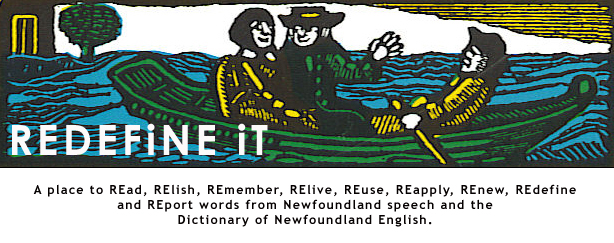A yaffle of world-wide quintal usages, with a special tangent on Indian weights and measures, via e-mail from Stephen Keller.
***
Sent: Sunday, July 20, 2008 7:18 AM
Subject: quintal
used to occasionally hear it in india. no more though.
from american heritage dictionary:
quin·tal (kwntl)
n. Abbr. ql. or q.
1. A unit of mass in the metric system equal to 100 kilograms.
2. See hundredweight.
[Middle English, a unit of weight, from Old French, from Medieval Latin quintle, from Arabic qinr, from Late Greek kentnarion, from Late Latin centnrium (pondus), hundred (weight), from Latin centnrius, of a hundred. See centenary.]
in the u.s.a. the quintal is sometimes is 100 /_pounds_/ (quintal = hundredweight, cwt, short hundredweight, centner, cental, quintal )
a United States unit of weight equivalent to 100 pounds
and elsewhere it's 100 kg!
better make sure the guy you're bargaining with understands what you mean!
further research indicates it's used locally in many parts of the world just to signify a hundredweight of whatever the local unit of weight was.
_
quintal (q) [1]
a traditional unit of weight in France, Portugal, and Spain. Quintal
is also the generic name for a historic unit used in commerce
throughout Europe and the Arab world for more than 2000 years. The
unit began as the Latin centenarius, meaning "comprised of 100"
because it was equal to 100 Roman pounds. The centenarius passed
into Arabic as the cantar or qintar and then returned to Europe
through Arab traders in the form quintal. The German zentner and
English hundredweight are familiar forms of this same unit in
northern Europe. The traditional French quintal equaled 100 livres
(48.95 kilograms or 107.9 pounds), but today the word "quintal" in
France usually means a larger metric unit (see next entry). The
Spanish quintal is 100 libras (about 46 kilograms or 101 pounds).
The Portuguese quintal is larger; it is equal to 128 libras (about
129.5 pounds or 58.75 kilograms). "Kwintal" is the English
pronunciation given in standard English dictionaries, but "kintal"
(closer to the Spanish pronunciation) and "kantal" (closer to the
French) are also used.
quintal (q) [2]
a common metric unit of mass equal to 100 kilograms or approximately
220.4623 pounds. Notice that the metric ton is roughly equal to its
non-metric predecessors, but the metric quintal is about twice the
size of the traditional quintal.
since it comes from the latin and is connected to pre-revolutionary france's livre and kg. didn't come into existence until the french revolution, a hundredweight would seem the best usage, even if it does create cross-national confusion.
and to further muddy the waters let's not forget its cousin the qintar:
qintar
a traditional Arabic unit of weight, often called the cantar in
English. The qintar is the Arabic counterpart of the European
quintal (see below). The unit varied in size from market to market
and over time. In recent years, the qintar has been interpreted as
an informal metric unit equal to 50 kilograms (110.23 pounds);
traditional qintars tended to be a few percent larger than this. The
qintar is equal to 100 rotls.
in the indian subcontinent and in southeast asia too, many measures were variable, sometimes within a single administration, so before modern times many measures might have a single name and not be exactly the same.
this was common --- and in laos for example still is --- with regard to units of agricultural land (area). in many parts of laos the unit of area was that amount of land that would produce so many local containers (also of variable size) of rice. no wonder i was frequently confused, eh?
used to be that distances in third-world countries were variable too, since no one had an odometer and there were no mile- or km-posts. even today in rural india "how far is it to X?" will as often as not be answered in terms of how long it will take to walk there. but, since the person telling you has no way of measuring time either, the answer is frequently unhelpful. most infuriating before one becomes used to vagueness is the common reply: "only two furlongs" (1/8 of a mile). that response seems to have nothing to do with reality and can mean just about anything from a ten minute walk to several hours away. probably it means "go away and leave me alone".
even today measures change. a /tola/ in india really indicates a hair less than 11-2/3 grams (11.664 grams to be exact). the tola was what a silver rupee in the times of the raj weighed. silver rupees are long gone but that measure is still used more or less for precious metals. however, for spices, /_intoxicant drugs_/ and many other items the tola has been approximated downward (to the benefit of the shopkeeper or vendor or dealer) to 10 grams. you can fight for 11.664 grams but increasingly you'll get the reply, "that was then, this is now" ... "besides who can find all those tiny weights for fractional grams?" inflation everywhere these days! i doubt if digital scales will bring back the tola.
if this isn't enough, check out this website:
http://www.indiacurry.com/Miscel/indiahistoricweightsmeasure.htm
Thursday, July 24, 2008
Subscribe to:
Post Comments (Atom)





1 comment:
I have a recently written Spanish document that uses the quintal as a measurement for cork. Is this likely to be a Spanish quintal or a metric quintal? Do they use the historical one there still in some places, even though they converted to the metric system?
Post a Comment